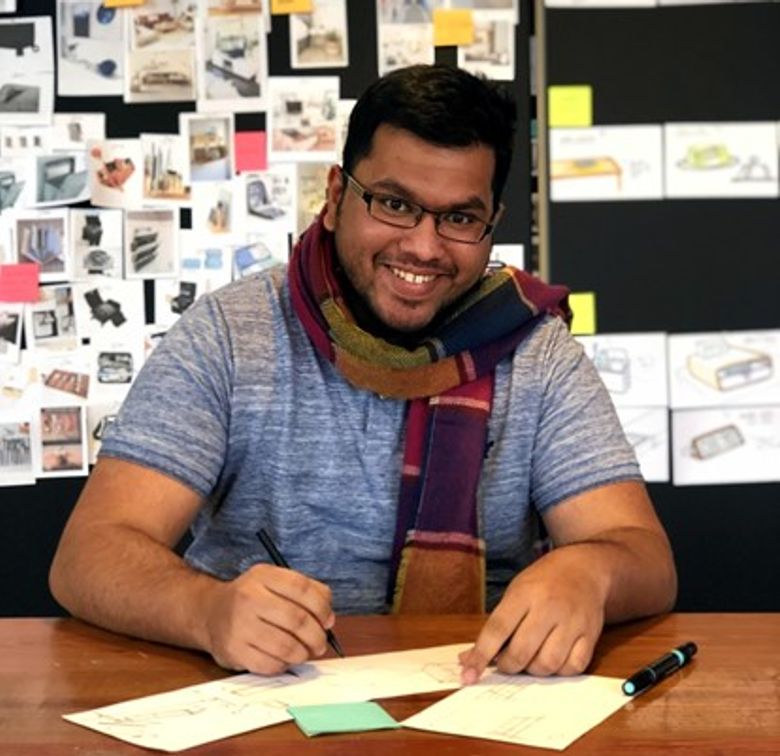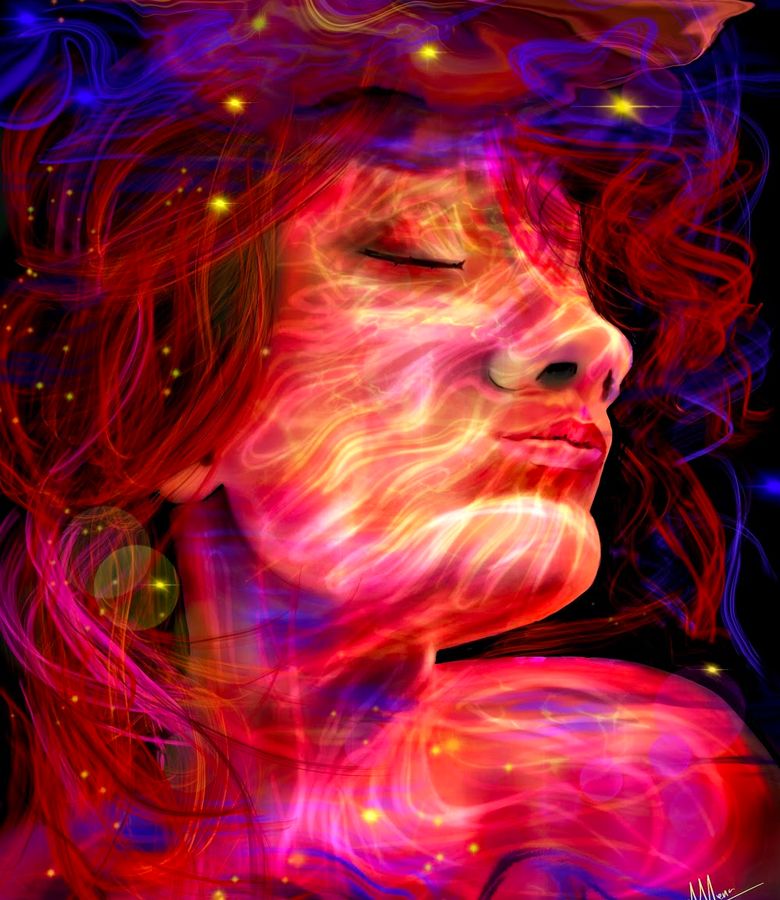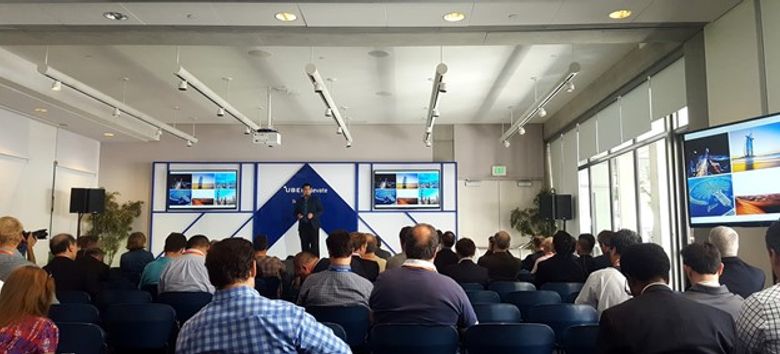Ajay Menon: A Fight For Good
Hear from experience designer Ajay Menon about creative growth, diversity and following your own path.
Connecting the Dots

Ajay Menon fights for good.
Menon considers this a phrase to live by. Through his work as an experience designer in the XR field and now working at Autodesk, Menon alleviates problems users face every day. He grounds himself in solving these issues and hopes to help users have a better life.
“In reality, product and experience design is a holistic approach to building a new product and it’s experience from start to finish, that meets the needs of its users,” he said. “In fact, it's the intersection of the various user experience design disciplines that go into creating modern digital products.”
Growing up in India, Menon wasn’t exposed to design because, according to him, the field wasn’t very popular there. Menon says there’s a running joke in India where “you first become an engineer, doctor or a lawyer, before discovering what you really want to do in life,” which ended up happening to him. Through his interests in sketching and painting, Menon found himself involved in organizing cultural festivals in college. Although he graduated as an engineer, he left this field, searching for something more.
“I believe that good visuals combined with great story-telling can be immensely powerful and immersive to an extent that they can easily influence and change the world, when used properly,” he said.
Coming to California was a big step in getting the exposure he needed to find himself where he is today. In need of a balance between technical skills and art, he threw himself into opportunities that would fit this new vision and found his answer in design. While in California, he joined a master’s program called ‘Transportation Systems and Design’ at ArtCenter College of Design in Pasadena.
“As a designer I was always drawn to challenges touching on AR/VR, mixed reality, transportation, logistics, aerospace and solving complex user experience problems. The beauty of design is that there are lots of commonalities between the different design fields, and the base knowledge and principles are often similar,” he said. “And overtime, I decided to specialize in experience design for products and emerging technologies.”
Menon had on-going conversations with family and friends from India to explain the value of design and how much of an impact it has on people. He hoped to spread his mindful attitude about design to those around him, to show how important design is. It’s a fight for good, and Menon is in it for the long haul.
“As a designer, every single detail is knowledge and can be counted as a valuable experience, provided you learn how to connect the dots!”
From Visualization to Creation

A typical workday
While he sketches for fun in his free time, Menon’s work entails a lot of visualization. Through collaboration and brainstorming with his team, he tells a visual story of new concepts and ideas. Every day is different, depending on what type of project Menon is working on and what phase it's in.
Some days are all about on-going communication among team members, group and one-on-one meetings, going over feedback about the designs, technology and more. On an average day, he’ll correspond with researchers, engineers, developers, project managers, designers, and artists. But sometimes, Menon is able to focus on individual work through concept sketches or finalizing upcoming presentations and projects.
Menon has a lot of responsibilities. He’ll work on ideation sketches, evaluation and mock-ups, assisting in customer research and even presenting the design to a wide range of audiences including users, management, engineers and managers. Since he's had a multitude of experiences in different fields, Menon has worked on a fascinating array of projects.

A colorful project history
While still in school, Menon did a sponsored project by Uber in which his team had to focus on a future of on-demand urban air transportation. For his master’s thesis project, he concentrated on mitigating social isolation for astronauts in space. As a result, he created a virtual reality environment for the astronauts to stay connected with family and friends on Earth, cultivating that sense of community desperately craved in space.
For his DesignMatters fellowship, he was able to work with Los Angeles’s Innovation Team on reforming the LAPD and designing a 21st century police force.
Recently, Menon worked as a product experience designer associated with MagicLeap, and was tasked to “shape the future of augmented reality (AR) and spatial computing.” Unfortunately, Menon lost his job due to COVID-19 in April but was able to find his current job at Autodesk as a senior experience designer. While working remotely in Florida, his team is located all over, from San Francisco to Toronto.
👉 There are many exciting careers in design. Learn about one of them here.
The Missing Ingredient

The importance of varied perspectives
“Diversity is far bigger than race, age, gender, size, physical ability or faith,” he said. “For that reason alone, it is our responsibility as designers to understand the audiences for whom we are designing for.”
Diversity in the tech industry may be the ingredient a company needs to break into new markets, according to Menon. Being flexible is a part of the job, as adapting products to different places and their laws, regulations and customs tend to bring success. Because designers need to understand their users, having that diverse workforce allows there to be a foundation of empathy.
“Having local connections, native language skills and a cultural understanding can boost international business development exponentially,” he said. He added, “Over the last few years it has become accustomed to the need for acceptance and empathy and most importantly, equality.”
Menon notes that there’s been a “resistance to openness and inclusion” in the tech industry, which is the opposite of how designers succeed at their jobs. Designers create experiences that have huge impacts on their users. Whatever the product may be, the work put into imagining and building products “[affect] the relationships [users] have with the people around them.” Menon knows that society and the design industry have a long way to go in both understanding and implementing a more inclusive and diverse environment.
"Diversity generates diversity."
But with such a long road ahead, Menon also believes that “diversity generates diversity.” Designers are expected to be able to analyze a problem from multiple perspectives. And those perspectives come from a diverse team, working collaboratively and inclusively. Diversity efforts don't just stop at a company’s hires. Designers have the opportunity to be aware and act on that to make designs more inclusive and challenging what’s considered normal. It’s necessary to “force ourselves to think outside of the box and remove biases from our designs.”
“Accessibility for all our users is vital, unfortunately a lot of the time designs are only created to work for the perceived majority of our users,” he said.
With more diversity comes more innovation. Through varied backgrounds, ideas and experiences, the possibilities to solve problems enter a new realm of understanding and empathy. But it’s important to note that diversity efforts shouldn’t fall on the shoulders of people of color. Menon knows that a healthy environment “does not automatically put undue pressure on the few non-white members of the profession,” where they won’t have to put in “disproportionate effort into being advocates for where they work.” Having this layered responsibility is added on top of already existing commitments in a workspace, the effort is practically counteractive.
“When these people already have a demanding role, they shouldn’t have to be part of every activity, too,” he said.
In an ideal world, there would be ongoing open discussions surrounding diversity issues and an increase of visible diversity in leadership roles. There would be more support for under-represented groups, to help them thrive. Menon hopes to see this in his industry and beyond.
👉 Read Next: Tony Aube, Making Tech More Accessible
Leaning into the Experiences

Following your own path
Menon says that most people believe you need a degree to become a designer. But this is simply not true. He’s worked with people who have studied illustration, photography or didn’t attend a university and instead picked up skills from jobs or online courses. He was even taught design by instructors who had credentials in music, literature and psychology.
“Design is a space where traditional qualifications are not as important as talent and skill, most of which can be perfected with time and experience,” he said.
Beyond designing, aesthetics and visualization, it comes down to managing relationships. Through “[navigating] power balances at work,” you have to know how to present and make a case for your designs. Building relationships and developing the art of persuasion is vital for designers, according to Menon.
A bit of advice
Looking back, Menon would tell himself to enjoy every experience he receives rather than worrying about getting the best kind, as they all provide value and a myriad of lessons. There is power in curiosity and asking lots of questions. That feedback will allow him to apply those lessons moving forward, even if he doesn’t immediately succeed. One can find happiness in failures.
“Be as open to learning and working in diverse teams and environments as possible, and explore freely and often without an agenda,” he said. “Always be open to connect and learn from people who have different backgrounds than you, or come from different fields and walks of life."
He added as a final note to his younger self, “And travel as much as possible.”
You can contact Ajay Menon and find more of his work at his website.
👉 Read Next: Garron Engstrom, A Helping Hand Through Design
The information provided herein is for general informational purposes only and is not intended to provide tax, legal, or investment advice and should not be construed as an offer to sell, a solicitation of an offer to buy, or a recommendation of any security by Candor, its employees and affiliates, or any third-party. Any expressions of opinion or assumptions are for illustrative purposes only and are subject to change without notice. Past performance is not a guarantee of future results and the opinions presented herein should not be viewed as an indicator of future performance. Investing in securities involves risk. Loss of principal is possible.
Third-party data has been obtained from sources we believe to be reliable; however, its accuracy, completeness, or reliability cannot be guaranteed. Candor does not receive compensation to promote or discuss any particular Company; however, Candor, its employees and affiliates, and/or its clients may hold positions in securities of the Companies discussed.
